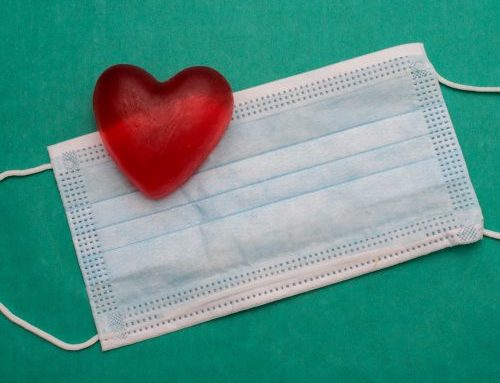Why are we encouraging our clients, followers, staff, and friends to utilize healthy coping skills right now? And why do so many of these skills look like simple distractions?
With COVID-19 still on the rise, fear and anxiety are also rising with it. It is almost impossible to look at any screen and not see something about the virus. Information seems to change by the hour. Often these intense emotions drive people to react without thinking or do something impulsive in hopes that the emotion will go away. These actions can often be harmful to ourselves and others, whether intentionally or not.
But, what can you do when things that are outside of your control are causing unwanted and intense emotional reactions? Distractions can be a big help in a time like this.
Why does this work?
Distracting yourself from that emotion for a short time is one DBT skill (Dialectical Behavior Therapy, or DBT as it is commonly referred to, is an approach to therapy that helps individuals look at the “dialectical” (opposite) idea to their negative thought. For more information on this type of therapy, check out our other blog on the topic. During these stressful times, these DBT skills can be helpful for all of us.) that is helpful in times of high emotional intensity.
Think of your emotion as an arch. When the emotion rises and starts taking over your thoughts and your body, it can be more difficult to see the situation clearly.
When that arch gets to its highest point, that is when you react and have little control over yourself. (This skill is most helpful when you notice your emotion starts going up that arch but before it reaches that fullest intensity).
Notice the signs that your body and thoughts are giving you to know when that emotion is ramping up. Instead of letting it get to that level ten, try this distracting skill when it gets to a level seven.
These distractions do not solve the problem, but they can give some healthy relief from the intensity of the emotion so that you can choose how to react with more clarity and understanding, rather than an impulsive or destructive action.
Try it out
If you can’t think of a distraction easily, start with the acronym ACCEPTS. Remember that not all of these will work for you, and you might need to try different skills in different situations. Talk with your therapist about which skill might work best for you.
A – The A is for Activities. Try different activities to fully distract your mind from the situation. This can be exercise, reading a book, playing a game, and many more. You can try familiar activities like your favorite hobbies or try something that you have never done before.
C – The first C stands for Contribute. Often an intense emotion or a difficult situation can leave us only thinking about how it is affecting us personally. A great distracting skill is to think about others and contribute goodness and positivity. During this time of social distancing, it can be more difficult to lend a helping hand – but not impossible. Donate online to your favorite cause. Many places like food banks and homeless shelters are also struggling as they are not seeing their usual donations of food and basic hygiene items. Instead of donating items, consider making a financial donation so that those places can purchase their own supplies. If you are feeling healthy, these places are also in need of volunteers.
C – The second C is for Comparison. This letter is often the one that gets the most pushback from clients as we usually are trying not to compare ourselves to others. This comparison is to help you be grateful for what you do have and the good things that are going on. It can be hard to find the good things when we are surrounded by uncertainty and anxiety, but this skill will help you by comparing to another time when you felt worse or when things were more difficult. Look for the positive.
E – The E is for Emotions. Do something that creates an opposite or competing emotion to the overwhelming one that you are trying to distract from. If you are anxious, do something calming. If you are sad, listen to a happy song or watch a funny movie.
P – P stands for Push away. Push away the negative thoughts or emotions. You can do this by visually pushing them out of your mind, or by writing it down and then throwing it away. This physically represents casting the thoughts or emotions away for the time being. Set a time for when you will think about the situation again and continue pushing the thoughts away until that time when you feel like you can problem solve.
T – The T is for Thoughts. Do activities that completely engage your thoughts by causing you to think deeply. This can be memorizing a poem or quote, counting backwards, or doing a crossword puzzle.
S – The final letter of the acronym is for Sensations. Think of your five senses (sight, sound, smell, taste, touch) and do something that will engage these physical sensations in safe and healthy ways. Splash cold water on your face, apply a good smelling lotion, mindfully eat a delicious snack, or listen to sounds of nature.
Distracting yourself through the ACCEPTS skill will help the emotion pass and get you to the other side of that arch. During this time when anxiety seems to be pushing in from all sources, take a moment to step away from that fear and try one of these skills. The first step can be as simple as turning off the TV and social media so that you are no longer bombarded with the anxiety-inducing information.
Danica Hungerford is a Licensed Professional Counselor Candidate with Grace Counseling. She has been helping us share distraction ideas on our social media, so if you are looking for inspiration, look for our images entitled “Feeling Overwhelmed? Try This!” If you need more help in knowing how to use this skill to temporarily manage emotions, or would like to talk through what you are feeling, contact us to set up an appointment with Danica or any of our counselors in person or utilizing TeleTherapy services.





